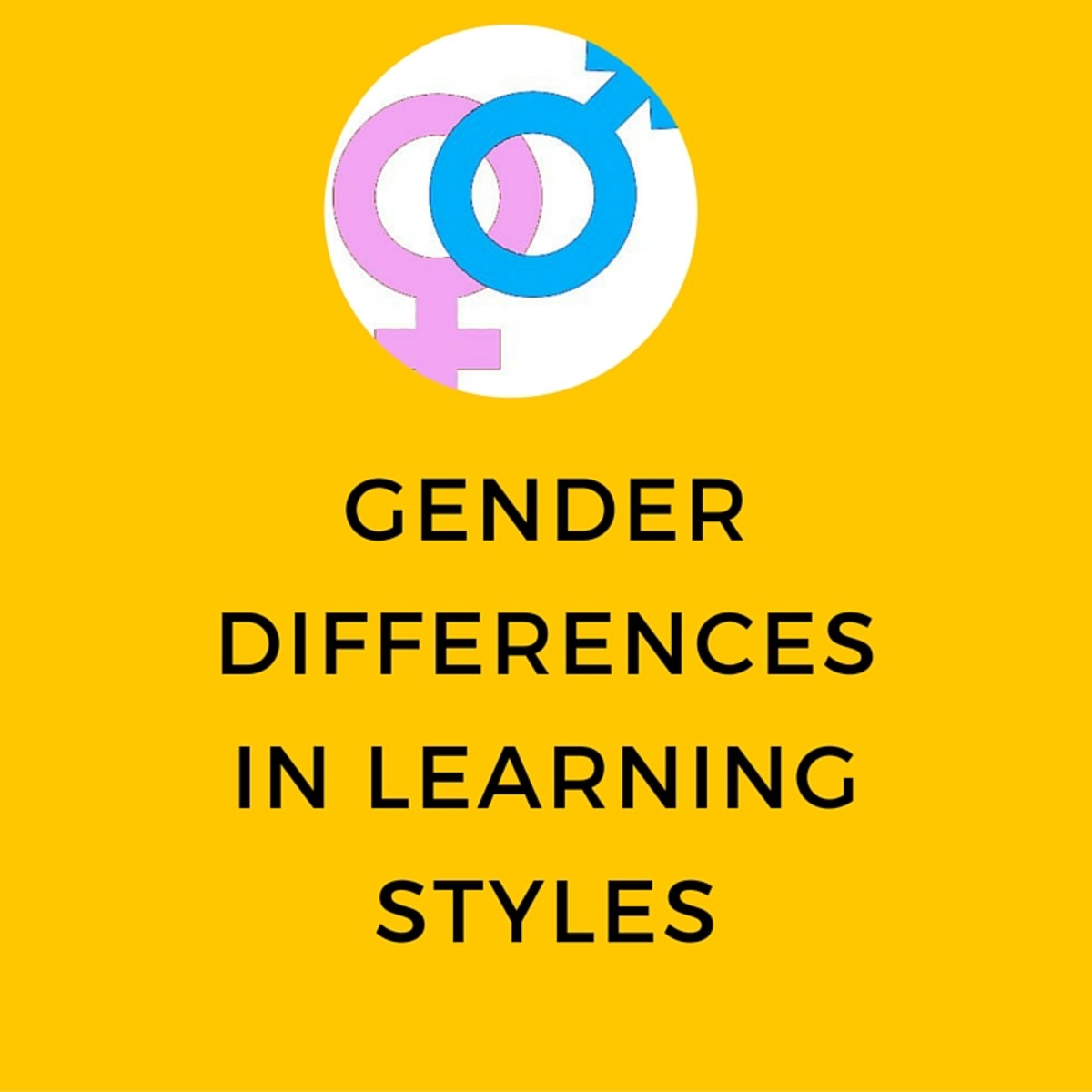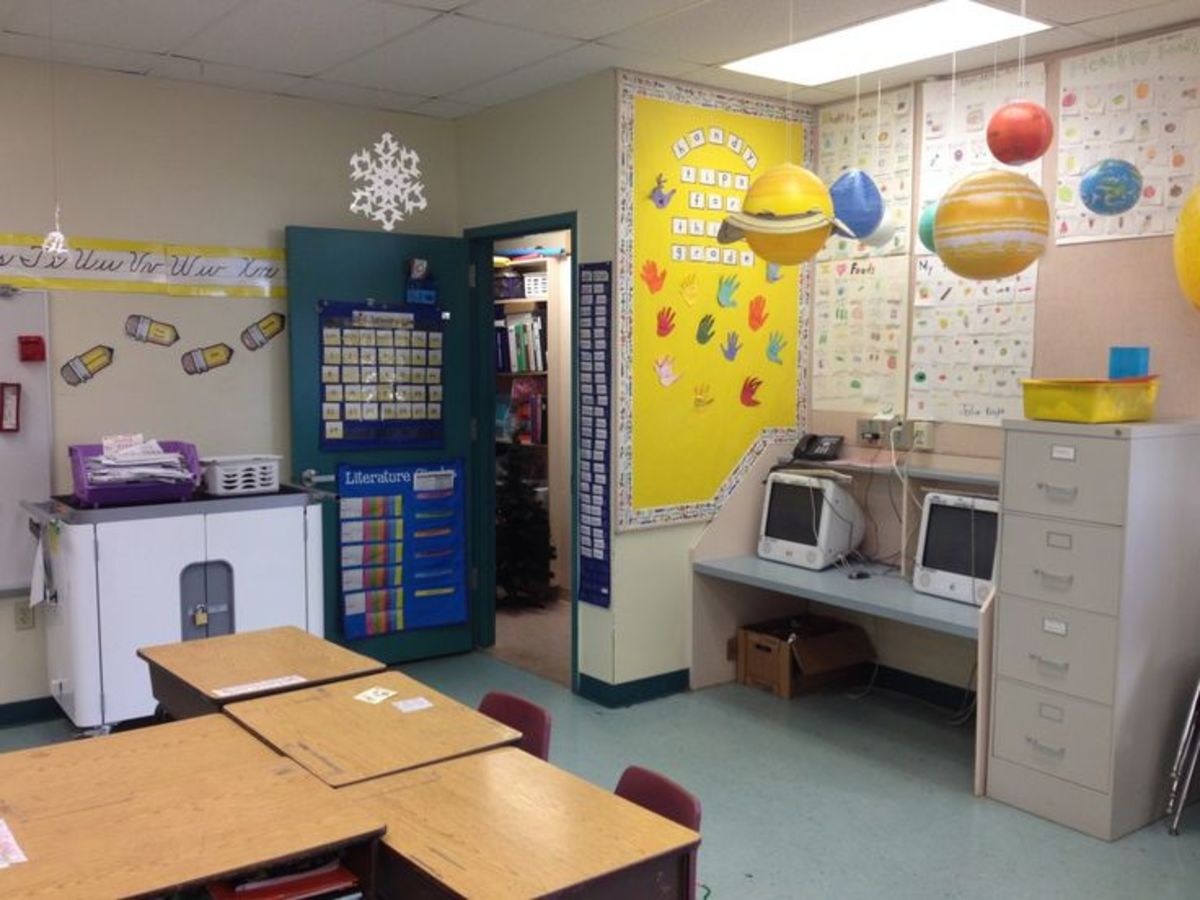What's Your Learning Style?

Success Depends on Your Learning Style
Know How You Learn to Enhance Your Memory
People continue to learn throughout their lives. You may want to train for a new job, acquire advanced cooking skills, investigate a new hobby, or go back to school. If you ever struggled during school and wondered why, it might be the approach that was taken to teach you and your lack of knowledge of your personal learning style(s).
When I was a teenager, I loved to have the radio on while I did my homework. "Turn that music off!" My father would say. "How can you concentrate with that noise on?" I didn't know how, I just knew it helped. Later I learned that I was strong in the music style. The music helped me process information. My father didn't share that style of learning; therefore, he didn't understand.
Work with your children's learning style(s) so they can be successful early in life.
As a teacher, I've learned to look for how my children learn. If I teach with my learning strengths, I may be missing theirs.
Take the Quiz

Quiz - What Learning Style are You?
Look below for more in-depth explanations of each Style
Naturalistic - Investigate and apply scientific reasoning to the world.
Bodily-Kinesthetic - Ability to use movements for either self-expression or precision to achieve a goal.
Musical - Sensitive to sounds and the emotions music conveys.
Interpersonal - Learning in a social setting in tune with the people around you and their motives, emotions, perspectives, and moods.
Intrapersonal - learning independently, connected to who you are and how you feel, and you know your own limits and abilities.
Visual-Spatial - Ability to see and modify things in your mind.
Logical-Mathematical - Ability to understand complex problems.
Verbal-Linguistic - Ability to use words effectively for reading, writing, listening, and speaking.
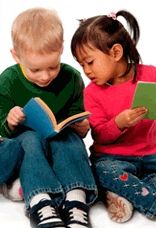
Quiz for Toddlers
Determine the learning style of young children who may not be verbal enough answer questions on their own.

Understand Your Child's Learning Style
Reduce Homework Frustrations.
Once you know your child's primary learning style, it's a good idea to let his teacher know what kind of approaches help him learn best. Incorporating your child's learning style will likely benefit many students.
People who Learn with Multiple Styles Absorb Information More Easily
Your child's learning style may change as she grows and people who can learn in a variety of ways can more readily absorb information. Encourage different styles of learning throughout your child's life.
Well-Balanced Students Will be Able to be Comfortable Learning in all Ways.
Teaching them in all ways when they're young gives them a competitive edge!
Discover Your Learning Style
Study Strategies
section

Homework Strategies
for homework and school work
Auditory learners are typically good at absorbing information from spoken words.
1. Talk to yourself or with others about what they're learning
2. Recite important information aloud, perhaps recording it and playing it back
3. Read a book and listen to the audio book at the same time
4. Use word associations
5. Set information to a tune and singing it to help remember it
6. Limit distracting noises
Kinesthetic learners prefer to be active while studying and may not be able to focus while sitting still.
1. Read aloud and tracking words on a page with a finger
2. Write things down multiple times to commit them to memory
3. Highlight and underline
4. Play with a stress ball or toy while studying
5. Move around or take frequent breaks
6. Do hands-on activities, such as building models or playing games
Visual learners benefit from seeing information on a chalkboard or in an illustration and may grow impatient listening for long periods of time.
1. Use flash cards
2. Study charts, tables, and maps
3. Draw illustrations
4. Write things down and reviewing notes
5. Highlight and underlining
6. Color-code information
Naturalistic
section
Nature Spark
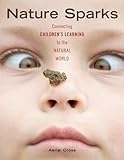

Naturalistic Learners
They love to be able to touch, feel, hold, and do. Hands-on learning, preferably outdoors is the best way for these students to learn.
How do I teach my nature-loving child?
1. Relate the course material to the natural world.
2. Encourage students to make connections between the course material and the natural environment.
Set up an Outdoor Classroom
Nature lovers love to be outdoors, and where better to learn about zoology (science, history), gardening (math, science, history), or entomology (science, math)? Digging in the dirt is always a fun pastime for children and a great learning experience to boot. How many different species of insects can they find in your soil? What about at the park? Collect samples, make slides and look at them close up through a microscope. For writing/English have him write a report on the different species he found. Naturalistic learners lead themselves to unit studies and unschooling. If your child is interested in something, they will suck up any and all information on that topic.
Use Real World Math
Real world math at your local farmer's market, or grocery store, games, and through play are great ways to learn these basic skills. Being outside, and in tune with nature is extremely beneficial to your nature lover-so let them be out there. Fresh air and a bit of vitamin D producing sunshine will do a growing body good. Reading in a hammock or on a swing is much more fun than in a stuffy "classroom" or bedroom. If you are able to set up an outdoor classroom that is protected from the elements do it.
More Tips:
1. Observe and record data.
2. Create a "living system" for the material you are trying to learn.
(Imagine the new material as an ecosystem or a pattern for you to figure out.)
3. Write about nature, daily life, or people as a topic so you become engaged in your assignment.
Tools for Naturalistic Learners
Bodily-Kinesthetic
section

Bodily-Kinesthetic Learning
Kinesthetic learners learn by doing and touching. They may have trouble sitting still while studying, and they are better able to understand information by writing it down or doing hands-on activities.
The bodily/kinaesthetic learner's intelligence is related to physical movement and the brain's motor cortex, which controls bodily motion. These students learn through hands on methods, performing, and physical endurance.
How do I teach my movement-loving child?
1. Encourage students to take part in sports, dancing, acting, and art.
2. Have students dance, role-play, or draw a lesson.
3. Encourage students to challenge themselves physically.
You Think in Movements
The fundamental ability to use movements for either self-expression or precision to achieve a goal is crucial for surgeons, athletes, mimes, choreographers, and directors.
Memorize by Associating Material With an Activity
The best way for you to retain information is to associate it with an activity. Dance, acting, and sports are easy for you to master. Relate what you are trying to learn to one of these activities, and you will retain information and gain understanding.
More Tips:
1. Perform a skit to show the action of the idea you are trying to learn.
2. Make a game out of the materials.
3. Apply what you are learning to hands-on models or in-practice examples.
4. Stay active when you are in a situation in which you need to concentrate.
(You can squeeze a stress ball when talking with someone or walk around while reading a book.)
Tools for Bodily-Kinesthetic Learners
Musical
section

Musical Learning
Auditory learners prefer listening to explanations over reading them and may like to study by reciting information aloud. This type of learner may want to have background music while studying, or they may be distracted by noises and need a quiet space to study.
The musical/rhythmic learner's intelligence is based on recognition of tonal patterns and sensitivity to rhythm and beats. These students learn by singing and drumming, listening to music, playing instruments, and moving their bodies to music.
How do I teach my music-loving child?
1. Encourage students to make up songs to learn difficult material.
2. Have students move their bodies and play music as they read text.
Move Your Body to Music While You Learn
You probably sing to yourself while walking down the street. Keep it up! Musical intelligence is associated with enjoying music, singing (vocalists), making music (composers), and playing an instrument (instrumentalists). You are sensitive to sounds and the emotions music conveys. You have a unique ability to know when something is off key.
More Tips:
1. Listen to music while you study to connect its patterns and sounds with the subject you are studying.
(Replay the same song just before a test.)
2. Create a rhyme, song, or chant for material you would like to memorize.
3. Associate what you're learning with a song you like.
4. Use your ability to distinguish sounds as well as hear the beat, tone, or chord in a song by learning an instrument or mixing sound.
Tools for Musical Learners
Interpersonal
section

Interpersonal Learning
Interpersonal learners' intelligence operates primarily though person-to-person relationships and communications. These learners have lots of friends. They join groups and often volunteer to help others.
How do I teach my social-loving child?
1. Provide these learners with plenty of group work and problem-solving activities.
2. Have these students interview other students and outside sources.
You Learn Better When You Learn with Others
Interpersonal learners thrive on social interaction. Friends often ask you for advice because you are understanding and in tune with the people around you and their motives, emotions, perspectives, and moods.
Your ability to manage relationships helps you understand situations and take a leadership role when necessary. You enjoy teaching and sharing your thoughts.
More Tips:
1. Give and receive feedback.
2. Talk out problems.
3. Work on large-group projects so you can use your social abilities to divide up tasks and understand all aspects of the project.
4. Be a part of active learning through mentoring, tutoring, or an apprenticeship. This activity will reinforce your own knowledge or abilities.
Books about Learning Styles
Intrapersonal
section

Intrapersonal Learning
A Relation Style of Learning
Intra-personal learners' intelligence is related to inner states of being, self-reflection, metacognition, and awareness of spiritual realities. These learners need time alone to focus. They know how to follow their instincts. They are creative, original, and self-paced.
How do I teach my independent-loving child?
1. Have students keep a journal of their learning and how it relates to their lives.
2. Encourage students to pursue their interests, dreams, and feelings.
Intrapersonal intelligence has been said to be the road to achievement, learning, and personal satisfaction. You are connected to who you are and how you feel, and you know your own limits and abilities. You often set goals for yourself, self-manage, and reflect on results.
More Tips:
1. Study alone in a comfortable yet quiet environment.
2. Set goals for yourself, and monitor your progress regularly.
3. Reflect on what you have learned, and think through new material.
4. Create a connection between new material and subjects you already know, and gain understanding by finding their similarities.
Tools for Intrapersonal Learners
Visual-Spatial
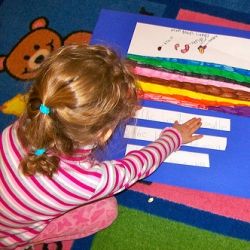
Visual-Spatial Learning
Visual learners process new information by reading, looking at graphics, or watching a demonstration. Children with this learning style can grasp information presented in a chart or graph, but they may grow impatient listening to an explanation.
The visual/spatial learner's intelligence relies on sense of sight and being able to visualize an object and create mental images. These learners like to draw, build, and design. They need to understand the use of space and how to get around in it.
How do I teach my visual/spacial-loving child?
1. Encourage students to visualize and to work with colors and pictures.
2. Show videos and provide students with maps, puzzles, photos, and charts.
Visual-spatial intelligence allows you to see and modify things in your mind. With an understanding of the visual world and its relation to physical items, you are good at solving spatial problems, designing, and doing crafts. Interior designers have remarkable spatial abilities, as do painters.
More Tips:
1. Use art projects to create representations of the content you are learning.
2. Draw related images next to your notes (along with arrows between ideas) to create connection and reference points.
3. Organize with color. Use different-colored highlighters, paper, index cards, folders, or tabs to create a visual system for finding things and grouping topics.
4. Visualize your topic. When you are learning something new, imagine what it looks like.
Tools for Visual-Spatial Learners
Logical-Mathematical
section

Logical-Mathematical Learning
The logical/mathematical learner's intelligence deals with inductive and deductive thinking and reasoning, numbers, and abstractions.
These learners like to perform experiments, solve puzzles, work with numbers, ask questions, and explore patterns and relationships.
How do I teach my logic-loving child?
1. Provide projects that involve categorizing and classifying material and working with abstract patterns and relationships.
2. Give students math, reasoning, and logic problems that move from concrete to abstract and require thinking conceptually.
Logical-mathematical intelligence is often what we refer to when we call someone -- such as a mathematician or an engineer -- smart. You possess the ability to understand complex problems, both logical and mathematical. This intelligence asks questions, finds solutions, and reflects on the problem-solving process.
More Tips:
1. Think about what you are trying to learn as a puzzle or a formula.
2. Ask questions and allow yourself to experiment with your own hypotheses to find solutions or new answers.
3. Concentrate on symbols, designs, and words to bridge mathematical and verbal logic.
4. Create an outline to understand your subject step by step. Doing so will allow you to stay organized and track what you're learning in a logical sequence.
Tools for the Logical-Mathematical Learners
A thorough and stimulating investigation into the nature of mathematical cognition.

Verbal-Linguistic
section

Verbal-Linguistic Learning
The verbal/linguistic learner's intelligence is related to words and language, both written and spoken. These learners like to read, write, tell stories, play word games, and tell jokes and riddles
How do I teach my verbal-loving child?
1. Have them memorize names, dates, places, and trivia.
2. Use descriptive language.
3. Encourage students to use new words to understand the material.
4. Have students write and then speak key words and phrases.
Verbal-linguistic intelligence (along with logical-mathematical intelligence) is often associated with doing well in school. You have the ability to use words effectively for reading, writing, listening, and speaking. The poet has been described as the epitome of verbal-linguistic intelligence.
More Tips:
1. Use words to explain complicated subjects.
2. Ask questions.
3. Engage in the Socratic method, digesting information through a question-and-answer exchange.
4. Hone your native ability to tell a story.
Multiple Learning Styles
Multiple Intelligences
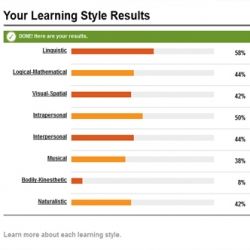
Combination of Learning Styles
Most people have several learning styles
If you're focusing on your own learning skills, pick the strongest 2 or 3 areas based on the results of the quiz. Most people don't have one learning style.
Provide all your students with an optimal learning opportunity. To do so, you need to offer a wide variety of activities and processes. Ask students to try every method, so they will learn which way they learn best.
For ways to reach all your students with different learning styles, have students work in cooperative learning groups.
1. Have intra-personal learners be the journal keepers, recording their thoughts and feelings about the process.
2. Have the interpersonal learners be the organizers and recorders of the groups, giving oral reports.
3. Have naturalistic learners measure, chart, and map the results, showing the pattern as it relates to the natural world.












](https://m.media-amazon.com/images/I/41QT7ilIrRL._SL160_.jpg)







